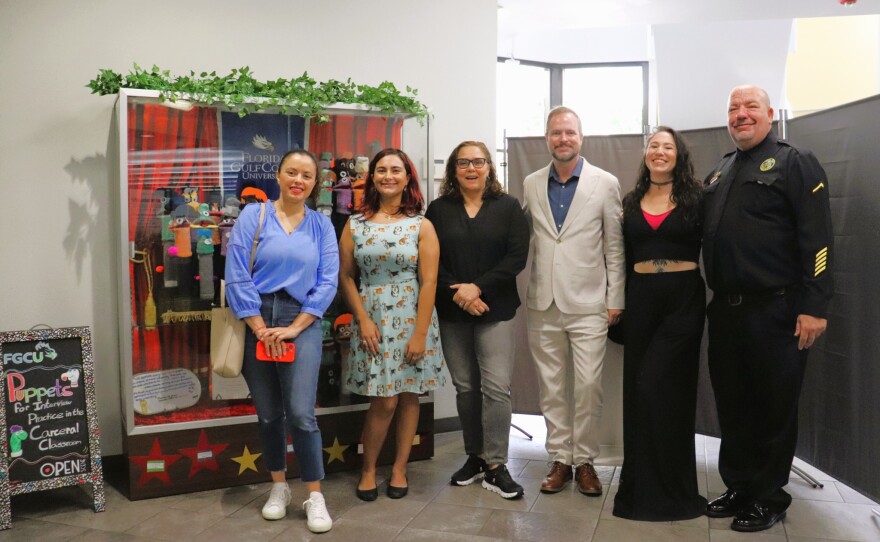Dr. Tyler Fisher, Dean of the Honors College at Florida Gulf Coast University, recently led a four-week bilingual workshop series titled The Art of Interviewing. But this wasn’t a typical job prep program. Instead, it invited incarcerated individuals to create puppet personas.
“The basic idea grew out of something I had observed that when teaching English to elementary school kids in Spain: using puppets helped them lose their inhibitions about mispronouncing words. They were able to speak through the puppet much more fluidly.” He tucked that idea away until later, when conversations with a colleague in London, who had used a puppet to stimulate her elderly mother’s appetite, sparked new inspiration.
While teaching an honors course that included a deep dive into puppeteer Jim Henson’s biography, Fisher began to consider puppetry in yet another unconventional setting: jail.
“One of my students [Leah Basaria] was teaching in the Osceola County Jail,” he recalls. “As she and I talked, we thought, we should try and use puppetry in this unconventional setting. Let's see if we can also reduce the inmates' inhibitions when it comes to practicing job interviews.”
The participants' initial reactions were mixed. Thirty-six-year-old participant Alex Garcia admits he was skeptical at first:
"When I saw the puppet, I couldn't stop laughing because it was so funny. My first thought was like 'Sesame Street' or the Muppets, Kermit the Frog. It threw me off, took me out of my comfort zone. But in a good way, it was different, really different."
One might wonder whether giving incarcerated individuals puppet-making materials might lead to inappropriate creations. Fisher shared how what emerged was surprisingly earnest.
“I thought, oh no, this is going to descend into innuendo and other inappropriate things in that setting. But it didn’t, and I think there was a recognition among all the parties that this was serious fun, but it had a serious point. Is it an appropriate context for even having fun? And I think these are self-selecting students who choose to go to these classes to better themselves, and I see no reason why we can't make that as enjoyable as possible.”
The result: 44 unique puppets, each crafted with care and a sense of personal identity. Forty-two-year-old participant Sherieann Torres Perez described her puppet this way:
“My puppet. She has hair, a little ribbon at the top, a nice button-down sweater. She is a green puppet. I think I actually chose her color for money. That’s what I got from that green color. Personally, I needed to make money for a good career.”
Garcia describes his puppet differently:
"It's green with swirly whirlpool eyes, a gray bow tie, square brown eyebrows, and a little blue tongue that looks like a frog tongue."
But for Garcia, the real value went beyond the puppet itself.
"It helped me feel more comfortable with being uncomfortable. It helped me build my Spanish skills, because Spanish doesn’t always literally translate into English. So, it broadened my vocabulary when it comes to interviews."
The puppets are now on public display at the Hart Memorial Central Library. When the inmates are released, they’ll have the opportunity to collect their puppets. In each place, a card will be left behind, telling their story and sharing their hopes for meaningful work.
“I’d like to think of it as a display of people who, yes, have served time,” says Fisher, “but they are creative agents. They are ready to reintegrate into society.”
WGCU is your trusted source for news and information in southwest Florida. We are a nonprofit public service, and your support is more critical than ever. Keep public media strong and donate now. Thank you.













